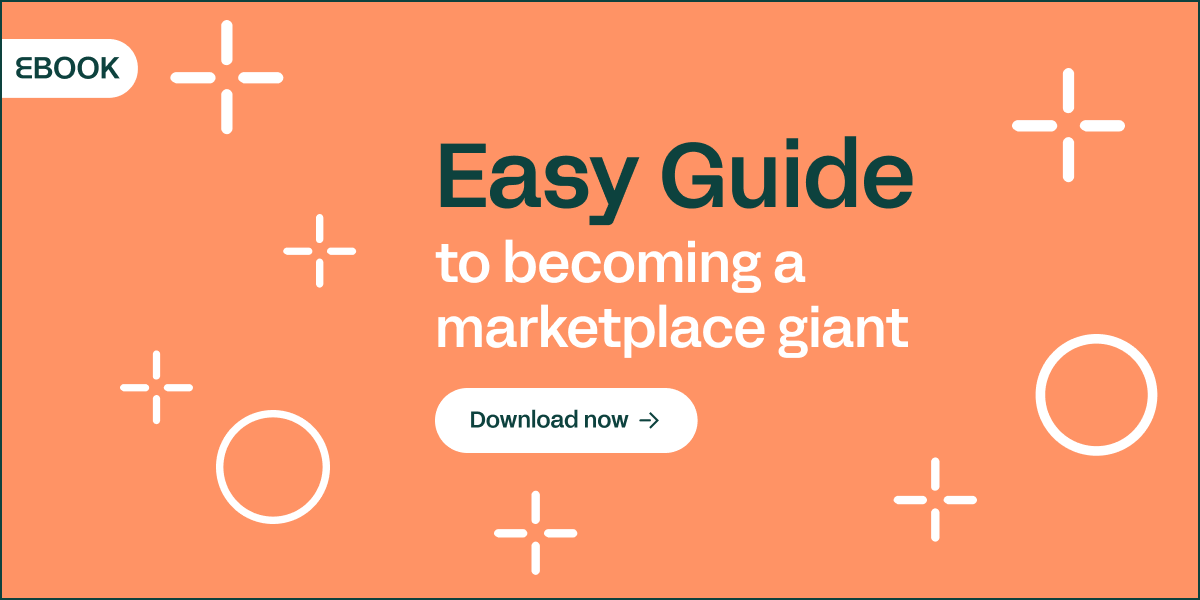
Table of contents
- The advantages of selling your products in online marketplaces
- The disadvantages of selling your products in online marketplaces
- It takes investment in administration
- You play by the rules of the marketplaces
- There's massive competition
- Conclusion
Imagine the hotchpotch and bustle of the markets of Marrakech or Istanbul stretching back through the ages. Hundreds of thousands of shoppers, hawkers, dodgers and thieves cramped into a bustling hive of begging, haggling, shouting and (when all is said and done) selling.
It's best to think of online marketplaces in the same way, only much bigger.
If you have a digital catalog, you may be looking to move your products into the huge online marketplaces such as Amazon, eBay, Rakuten, Mercadolibre or AliExpress or Etsy. These large online shopping centres are visited daily by millions of users around the world.
There are many marketplaces and you should explore them in depth before you make any decisions. But the first step is to make a clear decision whether to commit or not; the losses in a failed campaign can be substantial.
If you're currently in that decision process, here are the advantages and disadvantages of selling online and hustling your way to the center of the market.
→ Take a look: What is a marketplace and what types you can find
The advantages of selling your products in online marketplaces
Your customers and sales could multiply in swathes
Your online customers visit depending on the investment you've made in branding, SEO and advertising. The more money you pump into marketing, the more customers will arrive, the more chance they will buy something. And the return on this investment (ROI) is your Key Performance Indicator (KPI).
Practically the same thing has been going on in the offline world since forever. Brand will hire space in large commerce spaces, places with huge amount of footfall, giving greater visibility to products — a lot more people than an independent store could attract.
Similarly, the online marketplaces can open up new audiences of tens of millions of shoppers, though infinitely wider than in the offline environment, the competition is fierce.
If you have the product, the brand, and some marketing expenditure, you have the chance of growing your sales exponentially.
And now's the time, to get involved. By 2021, online sales will outstrip offline sales in the US
It adds value to your brand
Online transactions have been one the biggest hindrances to the growth of online shopping. Users simply (and many still do, and in some cases rightly so) mistrust platforms that keep their banking details. The solution was to create strong brands that would inspire trust in security.
PayPal was the first to break the mould thanks to the hard work of Meg Whitman. Having a strong online brand increases its worldwide visibility and strengthens user trust in offline markets, too. If the platform gives confidence to the user, that prejudice is easier to avoid.
→ Keep reading: How to sell on ASOS marketplace
It allows you to reach new markets
Some online stores don’t sell internationally because of the barriers of international regulation, shipping, administration and customer service. The overheads to implement all of this is prohibitive, but not any more. Platforms have seen a niche and now provide their own shipping and taxation services to make sure international selling is as easy, or at least as easy as it can be.
Another impediment to internationalization is language. Marketplaces solve this problem, because they are usually multilanguage platforms, offering machine translations into hundreds of different languages (though it's always recommended to use human translations in product marketing.
Manage different sales channels more easily
It used to be that working with distributors and retailers even across a single town was prohibitive to growth. Not any more, online marketplace mean access to a worldwide audience and the product stays in the hands of the manufacturer, meaning a more seamless product experience and better branding.
Handling a diverse catalog across sales channels, as any product marketer knows, is an art. To manage this in online sales now requires a deeper investment in each channel, as platforms insist that you play by their rules. This means adapting your catalogs to every type of structure for every marketplace. The work multiplies and complicates because each platform operates in a different way. That’s crazy, right?
There are tools for Product Information Management (PIM) that simplify this process. Sales Layer, for example, solves everything in one fell swoop, allowing you to turn a disadvantage into a leisurely activity. With one click, all sales channels can be updated, and it’s also multi language. You can easily manage the flash sales, the temporary deals offered by companies like BuyVIP, which are often a real headache.
→ Also of interest: The 10 best marketplaces for selling in Europe
So there's the pros, but you also have to be conscious that to be in marketplaces you also have to pay a toll, and sometimes it can be high.
The disadvantages of selling your products in online marketplaces
It takes investment in administration
Some marketplaces operate with a fixed monthly fee while others charge a commission for each sale. Consider these expenses first as they make up one of the key costs when starting out.
With fixed expenses, your goal is to sell a large volume so it will be profitable. If you prefer to go for the commission on sale option, you have to calculate the profitability of your products and assess whether the final calculation generates the benefits you are looking for.
→ You might also like: How to sell on AliExpress marketplace
You play by the rules of the marketplaces
That’s the reality.
Although customers are buying your products, the transaction is made on the platform.
If you have a brand that that focuses on exclusivity and value, ask yourself, do you really want to be haggling against other traders in the grimy bazaars of the internet? But if it’s about piling high and selling cheap, online marketplaces, with the right strategy could make you very rich.
There's massive competition
If you compete on price and your product is also offered by another company in the same marketplace, it's going to be a tough fight.
Given this, how are you going to win?
You might think the obvious; by lowering prices and having a nicer logo. But sadly that just ain't so anymore.
The truth about companies that get their products high on the digital shelf is that they have better information and more coherent specifications. This is how Amazon became the biggest platform; by insisting that every seller follows a strict product datasheet. High quality images with the required sizing, with the correct price, size and weight specifications are the only replacement users have to know what they're buying online (it used to be picking them up and feeling them).
Poor or incomplete product datasheets are the main cause for purchases to be dropped. So take control of this before you enter the world of online selling.
→ Don't miss this: How to optimize your products in Amazon marketplace
Conclusion
If you want to give a push to your multichannel strategy with a PIM, don’t hesitate to contact our experts or try a 30-day free demo. They will give you the best solution adapted to your business needs and features.
Now get out there and get haggling!







